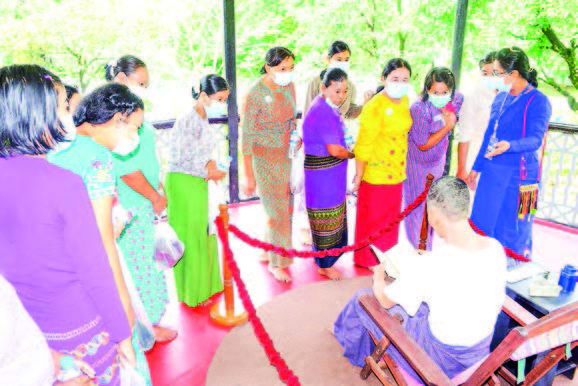ON the 78th anniversary of Martyrs’ Day, which falls on 19 July, a special exhibition will be held at the Bogyoke Aung San Museum (Yangon) in Bahan Township, Yangon Region, according to Daw Nyo Nyo Yinmauk, the museum’s staff officer.
The museum will be temporarily closed for approximately 20 days from 17 June to 18 July to prepare for a special exhibition to mark the 78th anniversary of Martyrs’ Day.
“At the entrance to the museum, visitors will find a display of the car the General rode in. Along the pathway leading to the museum, 18 boards featuring historical records and photographs of the General will be on display. Upon entering the museum, visitors will encounter a silicone statue of the General reclining in a chair and reading on the museum’s circular balcony. The book he was reading, a lighter engraved with his name, a cigarette, an ashtray, and a cigarette case are also showcased.
From there, visitors can proceed to the museum’s interior, where they will see the furniture from the General’s family dining room. In this room, five panels illustrate key aspects of the General’s life: his childhood, university years, political career, military leadership, and role as a national leader. After exploring the dining room, visitors can view two additional boards summarizing the General’s family life and his achievements, presented in both Myanmar and English,” said Daw Nyo Nyo Yinmauk.
“In addition, a brief history of the Bogyoke Aung San Museum (Yangon) will be displayed in both Burmese and English along the walkway outside the museum. At the museum entrance, visitors will find, in the living room, a settee and furniture used by the General’s family. Items on display include a coat gifted by Indian leader Jawaharlal Nehru, a radio the General listened to, an oil painting titled ‘‘A Backyard Market’’ by artist U Ngwe Kaing (painted in 1964-65), a family photo, a bust of the General, another painting, a photo of the General’s family living room, and a chair where the General used to sit while putting on his shoes,” she continued.
The museum, which was once the General’s family home, is located on a plot of land measuring 2.423 acres and was built in 1921 in a 20th-century European style combined with Western architecture. General Aung San lived in the house with his family from 1945 until his assassination on 19 July 1947. — ASH/TH


